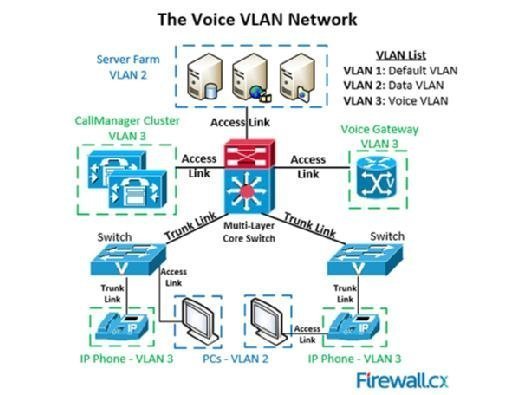
zentilia - Fotolia
Five techniques for getting a robust VoIP infrastructure
A VoIP expert stresses the importance of a separate voice VLAN setup, quality-of-service enablement and edge routers for a robust VoIP infrastructure.
Despite recent advancements in Voice over IP (VoIP), the technology still demands several important requirements to ensure it operates optimally.
Businesses that are considering investing in a VoIP PBX technology need to consider whether their existing infrastructure is capable of supporting it. Similarly, companies that have already purchased a VoIP PBX product should examine the existing network setup to identify possible areas that need to be improved.
Below is a list of items that companies should ensure their network infrastructure supports if they plan on investing in VoIP. Additionally, companies should examine if the proper configuration has been completed to ensure VoIP packets have the necessary priority they need.
- Voice VLAN: The VoIP infrastructure should be on a separate virtual local area network (VLAN) for both wired and wireless networks.
- Quality of service (QoS): QoS must be enabled and configured throughout the network infrastructure.
- IP phone/voice gateway traffic marking: IP phones and voice gateways should always mark VoIP packets so QoS mechanisms can treat all VoIP packets with priority.
- QoS on edge routers: Routers connecting branch offices must have QoS enabled and configured.
- LAN/WAN performance: Periodically measure your LAN/WAN (wide area network) links to identify packet loss, delay jitter and other problems.
Regardless the size of your network, the VoIP infrastructure must be placed within its own VLAN. This setup includes the main VoIP PBX, IP phones, voice gateways and other VoIP equipment or services that are usually placed in their own VLAN called the voice VLAN.
The voice VLAN ensures that only traffic from your VoIP infrastructure will be present within it, keeping it free from unwanted packets such as workstation ARP requests, workstation network broadcasts, traffic from the Internet, printing devices and DHCP server-client traffic. In addition, the main VoIP infrastructure components, such as VoIP PBXs, IP phones and voice gateways, will have increased bandwidth availability and exist in a more secure and isolated environment, away from attacks that may be lurking in the network infrastructure.
Wireless networks should also have a dedicated VLAN for their wireless VoIP clients. Wi-Fi clients can experience higher delays than wired clients since there is limited bandwidth compared with the wired infrastructure.
A big misconception is only large networks should have a dedicated voice VLAN. The voice VLAN design strategy applies to all network sizes and is considered a fundamental requirement for any VoIP infrastructure.

Give VoIP packets priority
Quality of service is an essential ingredient for a successful VoIP infrastructure. QoS has different implementations, but its main principles are common throughout all vendors: Give the appropriate priority to different types of packets. VoIP packets get special treatment here.
The effects of a non-QoS-enabled or poorly QoS-configured network are seen during high-traffic periods or traffic bursts. When QoS is enabled throughout the network, VoIP packets always have No. 1 priority to achieve minimum delay as they travel through the network infrastructure. Naturally, low-traffic networks are less susceptible to the negative effects of a congested network, but this doesn't mean QoS is not necessary.
IP phones and voice gateways are the primary source and destination for VoIP packets. Most of these devices are set automatically to "mark" VoIP packets so QoS mechanisms, such as DiffServ-DSCP and IP precedence, are able to identify and process them accordingly.
If devices in your VoIP infrastructure -- such as switches, routers and firewalls -- have the ability to recognize IP precedence or DSCP for classification and marking purposes, you can then provide end-to-end QoS with outstanding results.
Companies with branch offices usually pass voice traffic over their WAN/leased lines to help reduce telecommunications costs. WANs are generally much slower than LANs, making QoS more critical for them. Edge routers should be configured to provide top priority for VoIP packets, placing them in front of the queue and processing them as soon as possible.
Low-speed WAN links should use low-bandwidth audio codecs (like G.729) and IP Real-Time Transport Protocol (RTP) header compression -- in conjunction with QoS -- to help minimize bandwidth requirements for VoIP calls and deal with problems such as delay and packet loss.
Periodic performance measurements of your LAN and WAN infrastructure are important proactive measures to help identify network problems, hidden bottlenecks and check if QoS is working correctly.
Using open source applications, such as Iperf, you can test network throughput, delay/latency, jitter and packet loss -- all of which are factors that can negatively impact VoIP quality. Firewall.cx provides an extensive overview of Iperf and shows how the application can be used to measure network performance, packet loss, network delay and identify other network problems.







